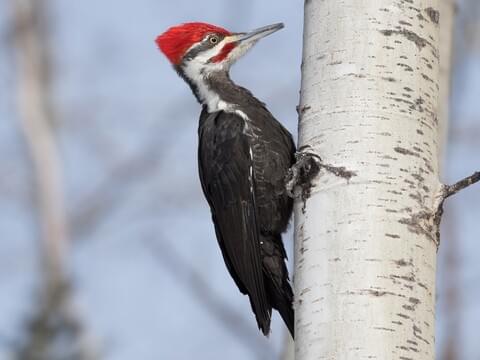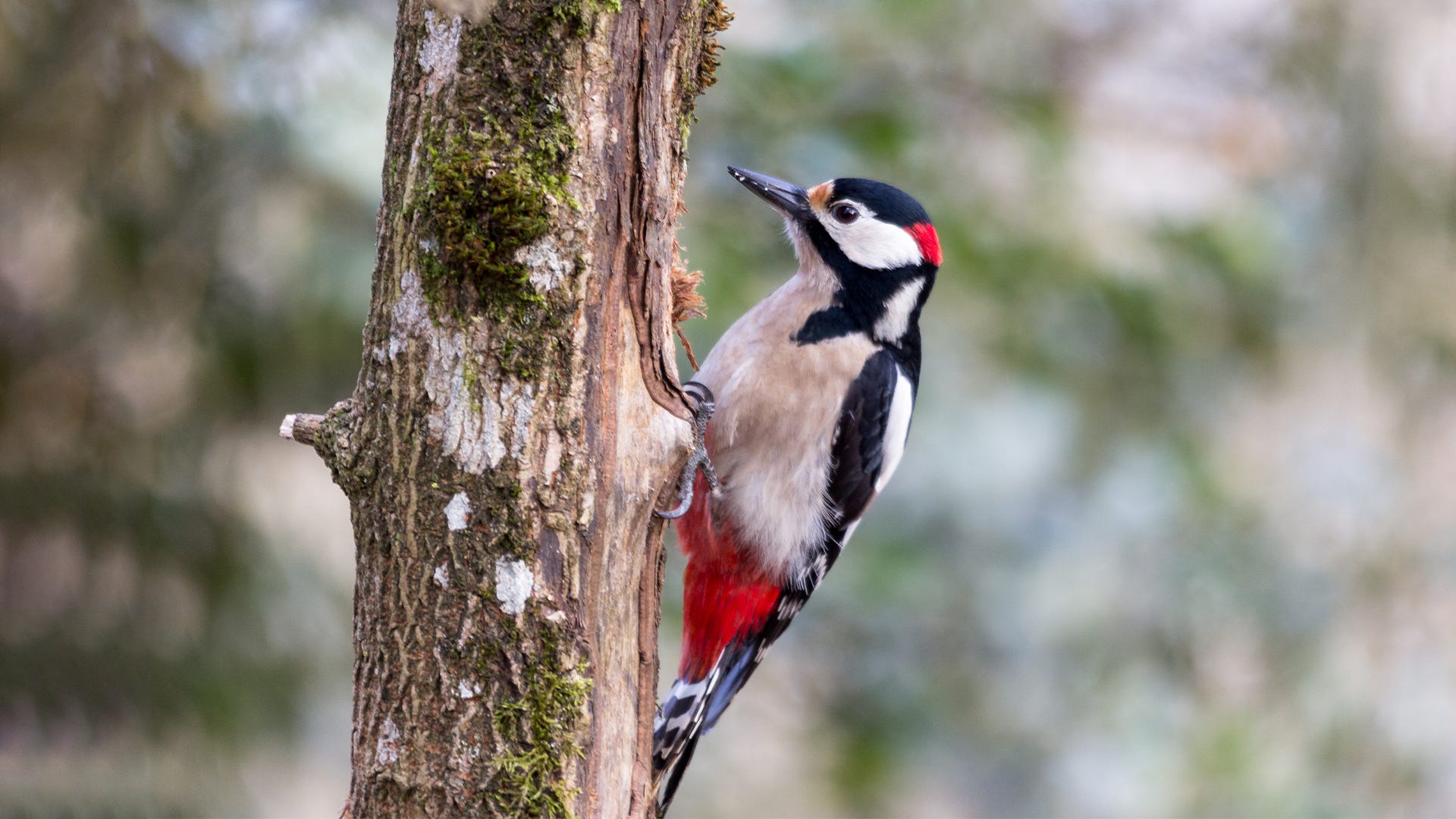Observing Woodpeckers in Florida: Species Variety and Circulation
Wiki Article
Woodpeckers: A Comprehensive Guide to Understanding These One-of-a-kind Birds
Woodpeckers, with their distinct behaviors and physical features, have long mesmerized the curiosity of ornithologists and nature lovers alike. As we explore the complex makeup, diverse varieties, and ecological importance of woodpeckers, a deeper recognition for these unique birds and the secrets they hold unravels.
Woodpeckers' Drumming Behavior
Woodpeckers show a balanced and accurate drumming behavior that serves numerous crucial features in their every day lives. This habits is primarily linked with interaction, territory protection, and foraging. The unique drumming sound is created by the quick pecking of their beaks against hard surface areas such as tree trunks, branches, or perhaps metal objects.Communication is a crucial facet of woodpecker habits, and drumming plays a significant duty in this process. Woodpeckers use drumming to develop their presence, attract friends, and maintain contact with their companions and children. The regularity, intensity, and period of drumming series communicate particular messages to various other woodpeckers in the area.
In addition to interaction, woodpeckers use drumming habits for territory protection. Woodpeckers in Florida. The loud and repetitive drumming works as an alerting to potential intruders, indicating that the area is already declared. By developing their area via drumming, woodpeckers lower the probability of conflicts over useful sources such as food and nesting sites
Additionally, woodpeckers also utilize drumming as a foraging technique. The rhythmic pecking helps them find insects hiding underneath the bark of trees by creating vibrations that interfere with the prey's cover-up. This actions showcases the flexibility and resourcefulness of woodpeckers in utilizing their drumming skills for numerous important purposes.
One-of-a-kind Adaptations for Tree Climbing
Having grasped the art of drumming to interact, protect area, and forage, woodpeckers have advanced unique adaptations that promote their impressive climbing up capacities in their arboreal environments. Woodpeckers have zygodactyl feet, with 2 toes directing ahead and two toes aiming in reverse. These tail plumes supply security and balance, allowing woodpeckers to maneuver up tree trunks with accuracy and dexterity.In addition, woodpeckers have effective neck muscle mass and an one-of-a-kind head structure that aid in their climbing up capacities. Their solid neck muscle mass enable them to rapidly eat tree bark without experiencing whiplash, while their thick head and little brain function as shock absorbers, securing them from the impact of duplicated drumming. These adjustments collectively make it possible for woodpeckers to browse the upright world of trees with performance and elegance.

Function of Woodpeckers in Ecosystems
By foraging for insects under the bark of trees, woodpeckers aid manage parasite populations, protecting against outbreaks that can damage the total health and wellness of the forest. Furthermore, woodpeckers create tooth cavities in trees that offer as important nesting sites for a variety Related Site of other bird varieties, advertising biodiversity within the environment.Additionally, the drumming and vocalizations of woodpeckers play a vital function in communication and territory facility. These noises not only offer to bring in companions but additionally assist define borders in between different woodpecker territories, lowering disputes and promoting an unified conjunction within the forest area. In general, the existence of woodpeckers in forest environments highlights their value as keystone species, influencing the characteristics and working of these environments in multifaceted means.
Makeup: Specialized Beaks and Feet
In the elaborate internet of forest environments, the specialized beaks and feet of woodpeckers are essential adaptations that allow them to fulfill their important eco-friendly roles. Woodpeckers have one-of-a-kind anatomical functions that are especially designed to aid them in their foraging and nesting habits.One of the most distinguishing characteristic of woodpeckers is their strong, chisel-shaped beaks. These beaks are completely adjusted for exploration right into wood to uncover bugs, larvae, and sap surprise under the bark of trees. The strong muscles and durable framework of their beaks allow woodpeckers to peck at a price of as much as 20 times per secondly without causing damages to their skulls.
Furthermore, woodpeckers have specialized feet that help in their acrobatic climbing capacities. Their click this site feet have 2 toes directing ahead and 2 toes directing in reverse, supplying a strong hold on vertical surfaces (Woodpeckers in Florida). This one-of-a-kind foot arrangement, along with tight tail plumes that act as a supportive prop, allows woodpeckers to hold on to tree trunks and branches effortlessly while they look for food or excavate nesting cavities
Woodpecker Species Variety
Woodpeckers are a varied team of birds discovered across numerous environments worldwide, with over 200 recognized varieties displaying adaptations to various atmospheres. Woodpeckers have actually progressed to live in a range of atmospheres, from forests and timberlands to grasslands and deserts, each offering distinct obstacles that have affected the find this development of distinctive woodpecker species.One more contributing variable to woodpecker species variety is their specialized feeding actions. Different types have actually evolved to make use of different food resources, such as insects, tree sap, fruits, and nuts, causing the growth of particular adjustments in beak form, size, and toughness. These adaptations allow woodpeckers to forage successfully in their respective environments, decreasing competitors amongst species and advertising particular niche differentiation. Furthermore, geographical isolation and historical aspects have contributed fit the circulation and diversity of woodpecker types, bring about the wide range of specialized adjustments seen in these remarkable birds.

Verdict
To conclude, woodpeckers are interesting birds that exhibit one-of-a-kind drumming actions, specialized adaptations for tree climbing, and play essential roles in environments. Their anatomy, consisting of specialized beaks and feet, permits them to flourish in their atmosphere. With a diverse variety of woodpecker types located worldwide, these birds are vital for preserving the health and equilibrium of forests and woodlands. Recognizing and appreciating the details of woodpeckers can offer valuable insights right into the all-natural globe.Report this wiki page